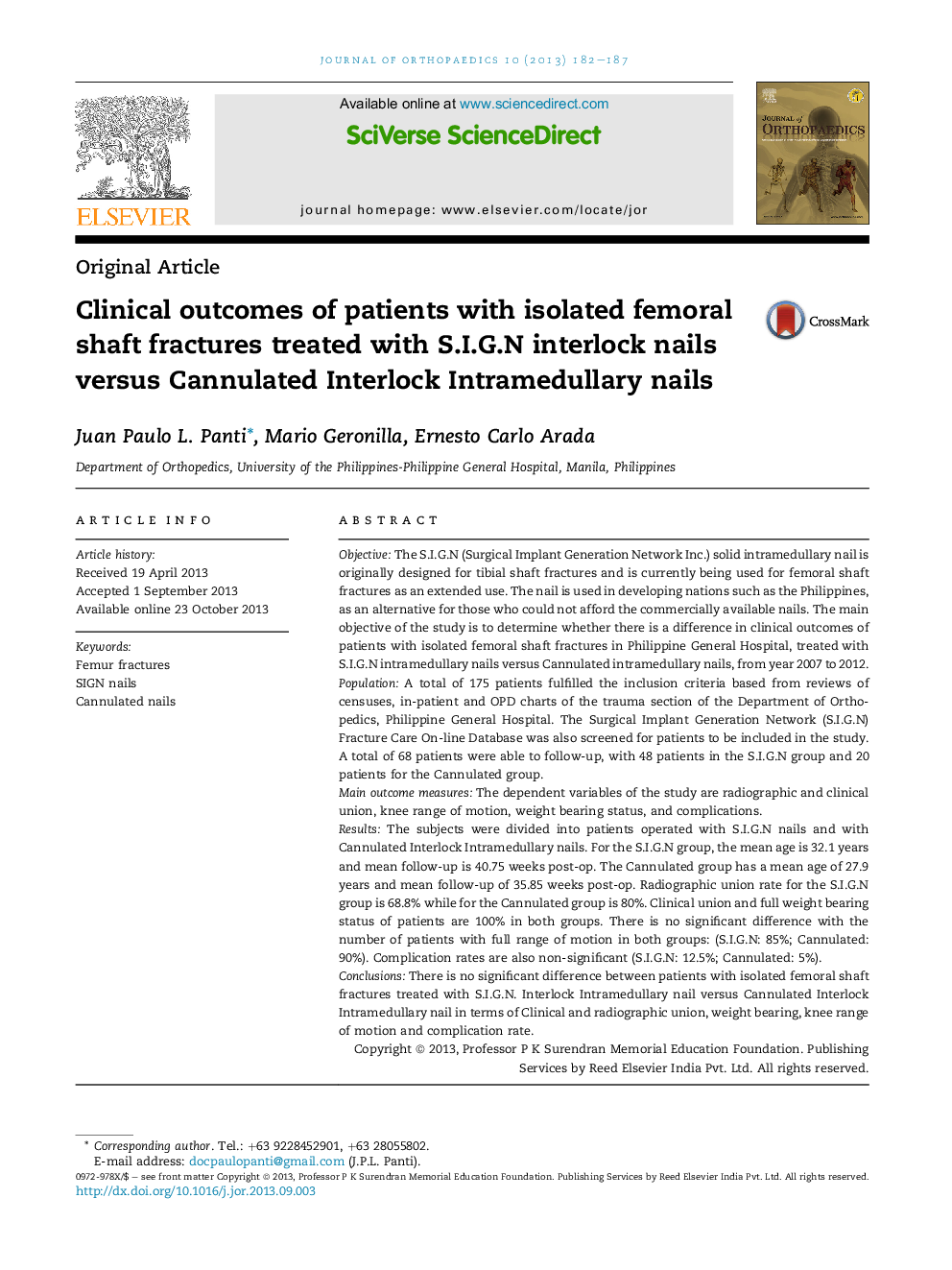| Article ID | Journal | Published Year | Pages | File Type |
|---|---|---|---|---|
| 3251864 | Journal of Orthopaedics | 2013 | 6 Pages |
ObjectiveThe S.I.G.N (Surgical Implant Generation Network Inc.) solid intramedullary nail is originally designed for tibial shaft fractures and is currently being used for femoral shaft fractures as an extended use. The nail is used in developing nations such as the Philippines, as an alternative for those who could not afford the commercially available nails. The main objective of the study is to determine whether there is a difference in clinical outcomes of patients with isolated femoral shaft fractures in Philippine General Hospital, treated with S.I.G.N intramedullary nails versus Cannulated intramedullary nails, from year 2007 to 2012.PopulationA total of 175 patients fulfilled the inclusion criteria based from reviews of censuses, in-patient and OPD charts of the trauma section of the Department of Orthopedics, Philippine General Hospital. The Surgical Implant Generation Network (S.I.G.N) Fracture Care On-line Database was also screened for patients to be included in the study. A total of 68 patients were able to follow-up, with 48 patients in the S.I.G.N group and 20 patients for the Cannulated group.Main outcome measuresThe dependent variables of the study are radiographic and clinical union, knee range of motion, weight bearing status, and complications.ResultsThe subjects were divided into patients operated with S.I.G.N nails and with Cannulated Interlock Intramedullary nails. For the S.I.G.N group, the mean age is 32.1 years and mean follow-up is 40.75 weeks post-op. The Cannulated group has a mean age of 27.9 years and mean follow-up of 35.85 weeks post-op. Radiographic union rate for the S.I.G.N group is 68.8% while for the Cannulated group is 80%. Clinical union and full weight bearing status of patients are 100% in both groups. There is no significant difference with the number of patients with full range of motion in both groups: (S.I.G.N: 85%; Cannulated: 90%). Complication rates are also non-significant (S.I.G.N: 12.5%; Cannulated: 5%).ConclusionsThere is no significant difference between patients with isolated femoral shaft fractures treated with S.I.G.N. Interlock Intramedullary nail versus Cannulated Interlock Intramedullary nail in terms of Clinical and radiographic union, weight bearing, knee range of motion and complication rate.
